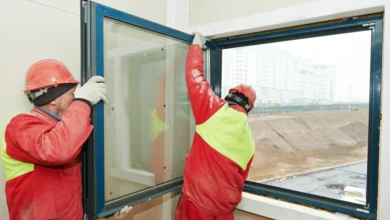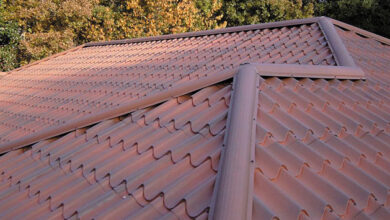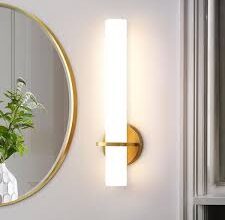Vertical Solar Panels vs. Traditional Panels: Which is More Efficient?

As our planet grapples with climate change, every choice matters. Solar energy is a beacon of hope. However, not all solar panels are created equal.
Vertical solar panels are entering the scene, promising to disrupt the norm. But how do they stand up against traditional panels?
In this article, we’ll delve into the differences between vertical solar panels and traditional panels. This way you can make an informed decision on which option is truly more efficient.
Ready to get started? Let’s explore!
Installation Orientation
The orientation of solar panels greatly affects their efficiency. Traditional panels are typically installed at an angle, tilted towards the equator. This maximizes sun exposure throughout the day.
Vertical solar panels, on the other hand, are installed perpendicular to the ground. They don’t rely on a tilt. Instead, they capture sunlight from the side, making them suitable for urban environments where space is limited.
Traditional installations often need large, unobstructed areas. The tilt angle and direction are crucial as they need adjustments throughout the year to follow the sun’s path.
Vertical panels can be integrate into building facades. Their panel orientation makes them less dependent on specific angles. However, they might not capture as much direct sunlight.
Space Utilization
Traditional solar panels need wide, open spaces. Rooftops and large fields are common sites. These areas allow panels to tilt and track the sun.
Vertical solar panels are different. They can be installed on building walls which is optimal for urban areas. It uses vertical space rather than horizontal.
Buildings with many floors benefit greatly as they don’t need to allocate additional land. But, they need more space than traditional ones. This is because they are mounted away from buildings to avoid shading issues.
In summary, space utilization is a key difference. Traditional panels need more land, while vertical panels utilize vertical space.
Energy Output
Vertical solar panels, being a relatively new technology, still have room for improvement. The orientation and spacing of the panels affect their overall efficiency.
They are designed to capture diffuse light as well, making them suitable for cloudy or shady areas. In terms of energy output per square meter, traditional panels still hold an advantage over vertical ones.
Additionally, traditional panels might require land clearing. This isn’t always practical in developed areas. Vertical panels avoid this issue. They integrate seamlessly into existing structures.
Cost Differences
When it comes to solar panels, cost is always a major consideration. Traditional panels have been around for much longer and are more established in the market. This means they are generally cheaper to manufacture and install.
Vertical solar panels, being newer technology, come with a higher price tag. However, their unique design can offset this cost over time.
For example, their space utilization capabilities can save on land costs in urban areas. Additionally, vertical panels have a longer lifespan compared to other panels. This makes them more cost-effective in the long run.
Despite their initial cost differences, both panels can provide significant savings on energy bills in the long run.
Aesthetic Appeal
Traditional panels are often large and bulky. They can be obtrusive when mounted on rooftops or in fields. These installations sometimes clash with the architectural style of buildings or the natural landscape.
Vertical panels offer a unique solution to these aesthetic concerns. Their sleek design allows them to blend seamlessly with modern building facades. They can come in various colors and finishes, allowing them to match different architectural styles.
These vertical panel advantages extend beyond solar panel efficiency. They can transform ordinary facades into energy-generating artworks, blending functionality with aesthetics.
Plus, their design can also improve the thermal insulation of buildings, reducing energy consumption from other sources.
Environmental Impact
When evaluating the environmental impact of solar panels, several factors come into play. Traditional panels require expansive, clear land for optimal installation. This often leads to land modification, which can disturb local ecosystems.
In contrast, vertical panels can be integrated into existing urban infrastructure, minimizing land use. Manufacturing processes for both types of panels involve resource extraction and energy consumption.
However, the traditional panel benefits in terms of energy efficiency and longer operational history cannot be ignored. Vertical panels, being newer, are improving and may soon offer comparable manufacturing efficiencies.
Both types contribute to:
- reducing reliance on fossil fuels
- promoting clean energy
- mitigating climate change
Yet, the choice between them may depend on the specific environmental factors at play.
Durability and Maintenance
Solar panels are a long-term investment, and their durability is vital. Traditional panels tend to have longer lifespans compared to vertical ones.
Vertical panels might be more susceptible to damage from severe weather conditions like:
- hailstorms
- strong winds
- heavy snowfall
However, their design makes them easier to replace if damaged. Traditional panels are heavier and more challenging to repair.
In terms of maintenance, vertical panels also have the upper hand. They are easily accessible, reducing the need for specialized equipment or costly repairs. But their orientation makes them harder to clean, as they can’t easily self-clean or tilt.
Both types of solar panels have pros and cons regarding durability and maintenance. So consider local weather and accessibility when deciding.
Market Adoption and Trends
In Europe, smart cities are integrating vertical panels into their infrastructure. Asia is also seeing a rise in vertical panel installations. They have proven useful where space is limited.
In the US, states like California and New York are leading the charge. Incentives and a push for sustainable buildings fuel this trend. Businesses are increasingly opting for vertical panels to optimize building facades.
For example, Minnesota’s premier solar provider are embracing both traditional and vertical panels. They offer solutions that cater to diverse needs. This approach ensures that all clients find the best fit for their situation.
The trend is clear. The market is moving towards more versatile and integrated solar energy solutions. With improved awareness and technology, vertical solar panel adoption is set to rise.
The Future of Vertical Solar Panels
Vertical solar panels are set to play a big role in the future of renewable energy. With urban spaces getting more crowded, their ability to integrate with existing infrastructures is invaluable.
Ready to invest in solar energy? Take the next step towards a greener future. Explore your options and find the best solar solution today!




